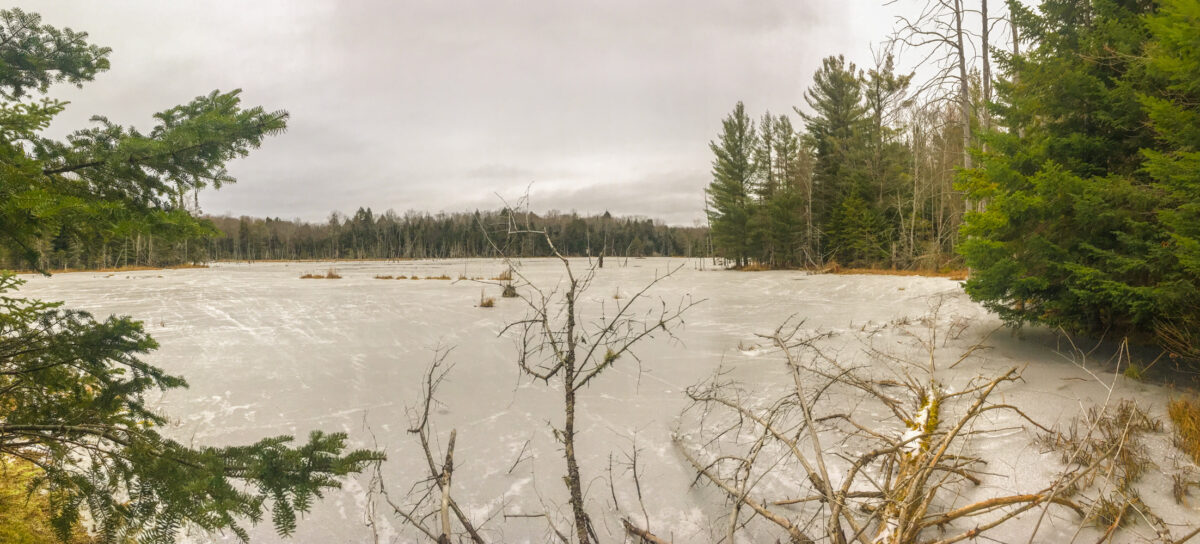An integrated solution for flooding, climate action and economic prosperity
By Kevin Trimble.

It’s time to get serious about getting residents, business people and decision makers to start building a watershed plan for the Muskoka River Watershed. And I’ll tell you why.
I can think of no other place in Ontario with a greater connection between socio-economic prosperity and environmental quality. We assume Muskoka will always be a world class destination that supports our varied livelihoods, but there is evidence that we can’t keep conducting ourselves the same way we always have. If Muskoka were to become less attractive due to continued environmental stress, we will see a decline in real estate value, tourism, land and waterfront development, retail, construction, property management, community support networks and the resilience our environment needs.
The watershed is facing increasing pressures from climate change and our land use practices. Day to day decisions about water management, land use and infrastructure renewal are not integrated because they focus too narrowly – one corner of the watershed, one issue. Broader implications, cumulative effects and climate change get forgotten.
The only way to address flood management, infrastructure upgrades, local building needs or climate action is to integrate our decisions comprehensively across the whole watershed.
Integrated Watershed Management (IWM) has been used all over North America, Europe and even in developing countries. But it has never been attempted in Muskoka and we need it now more than ever. Members of the Muskoka Watershed Council will be publishing a new series of articles to delve into why IWM is so important, how all of us need to be involved, the benefits it will bring, and how to get started.
Is IWM a bunch of new environmental rules for things we won’t be allowed to do? No. IWM will help us find opportunities to achieve our future goals for the Muskoka River Watershed while conducting business, managing water levels, enjoying vacations or improving our infrastructure. When we make decisions on what to build, or where, IWM allows us to consider what will provide the greatest environmental and economic benefits for the entire watershed, something we don’t do regularly now.
Many climate action goals will be achieved more effectively if we understand watershed processes. Whether you’re grading, building or protecting land, you can also be contributing to flood management, water quality and climate action.
And what about flood mitigation? Instead of looking exclusively at dam operation, we should consider watershed issues broadly. Thousands of small headwater streams, wetlands and lowland forests, all of which hold back water and provide ecological services, are routinely buried, blocked or culvertized. This contributes to our flooding problem. There are many examples where new culverts are installed to relieve flooding on the upstream side of roads, only to increase flooding, erosion and siltation downstream in the bigger rivers and lakes. Under IWM, support would be given for small projects to consider how to address not only the immediate localized flooding, but also goals for Muskoka River flows, property development, climate action and environmental quality. This would also maximize our return on municipal spending. Updating the Muskoka River Water Management Plan might help, but only as part of an integrated process. We’ll explore this further in upcoming articles.
We will also explore the major steps in IWM, but we already know it begins with all of us. Experience across Ontario and the rest of North America suggests that collaboration among watershed residents, businesses and decision makers is critical. We must agree on our shared interests for the future of the watershed and commit to an integrated process.
We need IWM to protect our future not only from flooding, but from all aspects of climate change and land use pressures.
Kevin Trimble is Past Chair of the Muskoka Watershed Council. He is a consultant living near Port Carling.
